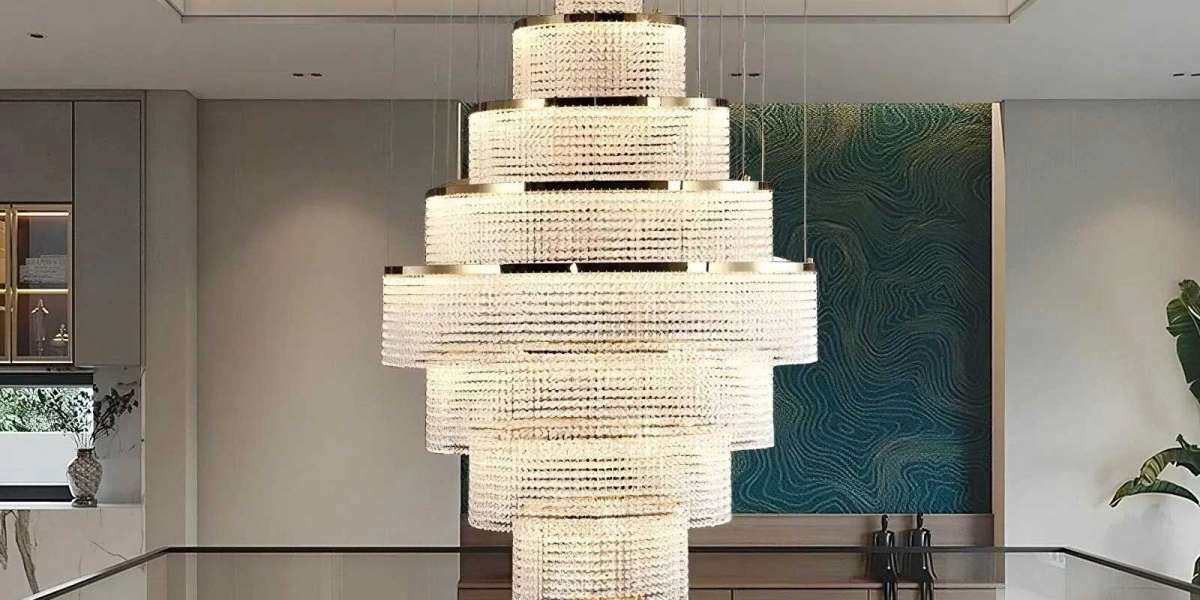Modern chandeliers have become a statement piece in contemporary interior design, transcending their traditional roles and transforming open spaces into dynamic, elegant areas. The strategic placement and thoughtful selection of chandeliers can enhance the aesthetic appeal and functionality of any open space. This article explores the art of arranging modern chandeliers in open spaces, focusing on design principles, practical considerations, and creative ideas.
Design Principles for Modern Chandeliers
The first step in arranging modern chandeliers in open spaces is understanding the design principles that govern their placement. Modern chandeliers come in various styles, sizes, and materials, allowing for versatility in design. Key principles to consider include:
Balance and Proportion
When selecting a chandelier, consider the size of the open space. A chandelier that is too large can overwhelm the room, while one that is too small may look insignificant. The goal is to achieve a balance that complements the room’s scale and other furnishings. For instance, in a spacious living room with high ceilings, a large, dramatic chandelier can create a focal point without overpowering the space.
Harmony with Interior Design
Modern chandeliers should harmonize with the existing interior design. Whether the space has a minimalist, industrial, or eclectic style, the chandelier should enhance and blend seamlessly with the decor. For example, a sleek, geometric chandelier can add a touch of sophistication to a minimalist setting, while a vintage-inspired fixture might suit a more eclectic or bohemian space.
Lighting and Functionality
Chandeliers are not just decorative pieces; they also play a crucial role in lighting. Consider the type of lighting needed for the space. A chandelier with dimmable lights can offer flexibility, providing bright illumination for tasks and softer, ambient lighting for relaxation. It’s essential to ensure the chandelier meets both aesthetic and functional requirements.
Practical Considerations
Arranging chandeliers in open spaces involves practical considerations that ensure safety, convenience, and effectiveness.
Height and Positioning
The height at which a chandelier is hung can significantly impact the overall look and feel of the space. Generally, in living areas, chandeliers should be hung at least 7 feet above the floor to avoid obstructing movement. In dining areas, chandeliers should be positioned approximately 30-36 inches above the table to create an intimate yet spacious atmosphere.
Electrical Requirements
Before installing a chandelier, assess the electrical requirements. Ensure that the ceiling can support the weight of the chandelier and that the wiring is adequate. Consulting a professional electrician can help address any potential issues and ensure a safe installation.
Maintenance and Cleaning
Chandeliers, especially those with intricate designs, can accumulate dust and require regular cleaning. Consider the ease of maintenance when selecting a chandelier. Opt for materials and designs that are easy to clean, especially in high-traffic areas where dust and grime may accumulate more quickly.
Creative Ideas for Open Spaces
Incorporating modern chandeliers into open spaces allows for creativity and innovation. Here are some ideas to inspire your design:
Layered Lighting
Combine chandeliers with other lighting fixtures such as pendant lights, wall sconces, and floor lamps to create layered lighting. This approach adds depth and dimension to the space, providing various lighting options for different moods and activities.
Mixing Styles and Materials
Don’t be afraid to mix styles and materials. A modern chandelier can be paired with rustic elements, such as exposed brick walls or reclaimed wood furniture, to create a unique, eclectic look. Mixing materials like metal, glass, and wood can add texture and interest to the space.
Highlighting Architectural Features
Use chandeliers to highlight architectural features such as vaulted ceilings, open beams, or large windows. Positioning a chandelier near these features can draw attention to them, enhancing the room’s overall aesthetic.
Chandeliers as Art Pieces
Consider chandeliers as art pieces in their own right. Select designs that are bold and sculptural, making them the centerpiece of the room. Modern chandeliers with unconventional shapes or innovative materials can serve as conversation starters and focal points.
Conclusion
Arranging modern chandeliers in open spaces is an art that combines design principles, practical considerations, and creative ideas. By carefully selecting and positioning chandeliers, you can transform any open space into a visually stunning and functional area. Whether you aim for a harmonious, balanced look or a bold, eclectic statement, the right chandelier can elevate your interior design to new heights.








